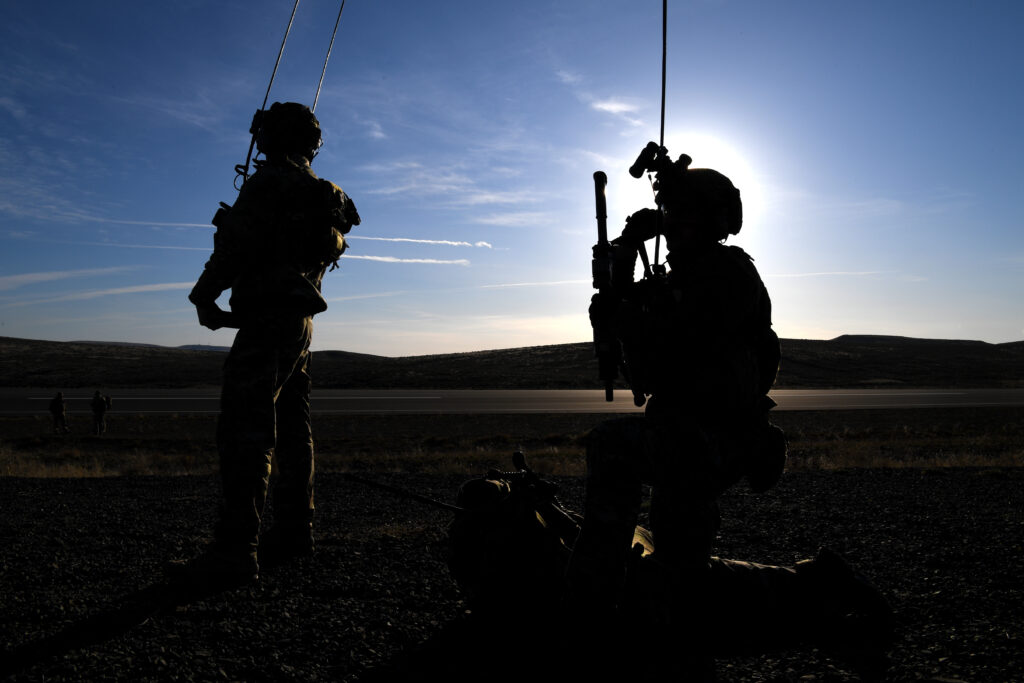
BEIRUT: The acquisition and deployment of C4ISR capabilities in the MENA region is growing rapidly as governments look to link all the domains they operate in — air, land, sea, space, and cyberspace.
Bahrain is that latest to embrace this trend, getting ready to deploy a C4I system by L3Harris Technologies to help the country implement enhanced battlefield management and integrate ISR solutions. The Gulf country is also looking to deliver network-centric communications for improved command and control with the integration of Falcon III radios.
What’s in it for Bahrain?
The new system will give Bahrain Defense Forces an “integrated vivid picture of the theater of operations for the benefit of command centers,” Mohamed Al-Kenany, military researcher and defense analyst at the Arab Forum for Policy Analysis in Cairo, told me in an interview.
But that’s not all. The system Bahrain is acquiring is compatible with the battle management platforms of the allies from the GCC armed forces and the American and British forces stationed in the region, which will allow the joint forces to execute defensive and offensive missions, as well as periodic protection missions in waters and above the Gulf.
This “enhances effectiveness, efficiency, coordination, and assignment of tasks for the coalition forces while reducing time, effort, and collateral damage,” Al-Kenany explained.
Strategically however, the deal bolsters the country’s ability to combat symmetric and asymmetric threats from Iran, especially its Revolutionary Guards. The issue here is Iran’s variety of missiles, drones, and unmanned boats, all of which represent direct threats against ships, oil installations, airports, and related infrastructure.
“The acquired program will therefore provide the Bahrain forces with the ability to simultaneously link with various ISR systems to provide better early warning and situational awareness across their forces,” Al-Kinany told me.
“This C4I Initial Operational Capability System program represents a major milestone in the advancement of command, control and joint operational capabilities for the Bahrain Defense Forces,” Chris Aebli, president of Global Communication Systems at L3Harris, told Breaking D.
Tactically, the Bahraini Defense Forces will have “improved battle management and strategic communication systems with secure voice and data networking capabilities,” Aebli told me.
The system, he explained, upgrades Bahrain’s ground communication network and provides military commanders the ability to plan tactical missions and monitor operations in real time with a common operating picture.
The deal also represents a qualitative leap for Bahrain’s overall com systems including an advanced level of battle management, command and control, data processing, and information exchange through high-speed communication and the exchange of data.
Way ahead
Nevertheless, the key question today is what Arab states must do to strengthen existing C4ISR capabilities.
Egypt, for example, has a significant research and manufacturing base allowing the local production of parts and components of command and control systems jointly with foreign companies. It has also established the Egyptian Space Agency – a first in the Arab world – which enables Cairo to develop and build satellites that play a vital role in C4I missions.
To top it all, the Egyptian Armed Forces developed the Radar Integration and Surveillance and Surface-to-Air Missile Command Centers.
“The first allows our forces to plan operations and tasks, manage radar systems, and link the various air, sea, and land combat platforms of the armed forces from American and French ones to Chinese and Russian,” Al-Kinany explained.
“The second analyzes and assesses the risks and air threats while determining the types of air defense systems necessary to deal with them,” he added.
There is no doubt that initiatives like these remain a vital key to a potential future joint C4ISR community in the region, in which armed forces can develop a network-centric concept of operations in a phased approach built around the heritage systems and equipment taking benefit from their current developments.
However, without a proper governance body looking across the whole spectrum of C4ISR capabilities and requirements in the region, very little can be done. Steps could possibly include building a joint intelligence, surveillance, and reconnaissance, enhancing cohesion within the region’s C4ISR community through increased awareness and establishing a concept development and experimentation capacity that integrates lessons learned into current operations.
Sullivan says Ukraine supplemental should cover all of 2024, long-range ATACMS now in Ukraine
“We now have a significant number of ATACMS coming off their production line and entering US stocks,” Jake Sullivan said today. “And as a result, we can move forward with providing the ATACMS while also sustaining the readiness of the US armed forces.”


























